
CJ Powers is an author/speaker
residing in the Chicagoland area. As a Writer/Director/Producer he
is an international script consultant and conducts screenwriting
workshops. His films released internationally and television programs
aired on CBS, PBS, ABC, the Family Channel, and various syndicated
stations. The majority of CJ’s directing awards, including the Silver
CINDY and Crystal Communicator of Excellence, were for family films. He
received additional honors from the U.S. and International Film and
Video Festival and the New York Film Festival. He is a guest writer for
Christianity Today’s
Singles Connection eNewsletter and has also been an Arts &
Entertainment columnist for the DuPage Christian.
|
Creating Dimensional Characters |
|
Kudos to Drew Barrymore in her directorial debut of Whip It. Not only did she do well directing the production, but she found a story worth telling. It played well on screen because writer Shauna Cross (Novel: Derby Girl) was able to visualize all the internal feelings in her screenplay and demonstrate depth of character visually. 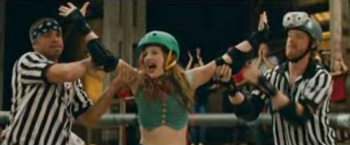 Developing strong visual characters is essential to a great screenplay. The audience needs to watch the hero move from her dream or important goal revealed in act 1, through a series of act 2 struggles to gain the skills and motivation necessary, to transform her character into one that overcomes all obstacles for the sake of fulfilling her heart in act 3. This action plotline must be intertwined into the story and visual. All too often writers want the hero to go from good to great within a story and never have to deal with real shortcomings. In Whip It, building camaraderie through the story created the pulse that gave value to hero Bliss, better known as Babe Ruthless. It allowed Cross to show Bliss’s vulnerable side and doormat-type weakness. By the climax of the film, Bliss overcame her tendencies to withdraw and stood on her own two feet when making difficult decisions about her future and love interests. 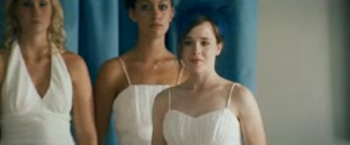 It is all too easy to make the hero a one-dimensional character when focusing on an action plotline. Many times screenwriters lean toward stereotypes that can be described in a few words like dumb blonde, macho man, lonely librarian, etc. The more layers built into the character, the greater the possibilities of driving interest within the hearts and minds of the audience. And when a combination of complex and authentic characteristics is used, it can give birth to a wonderful paradox that drives the audience to learn more about the hero. These multi-dimensional characters are built using three tools of the screenwriter: The hero’s thoughts, feelings, and actions. Character’s Thoughts To avoid the hero’s being too heady, her philosophies can be turned into beliefs like freedom, women’s rights, righteousness, etc. These beliefs will drive the hero to hold strong attitudes, which quickly lead to dramatic visual action. On the flip side of the coin, these dramatic attitudes and actions can cause conflict when it opposes the hero’s goals, creating hypocrisy that must be overcome.  In Whip It, Bliss lives her life trying to please her mother, while longing to be free and experience life her way, even though she doesn’t know what that way looks like. At the first turning point in the film, Bliss learns about Roller Derby and sets out to turn her philosophies of freedom into attitudes and actions that eventually lead to her true freedom. Character’s Feelings 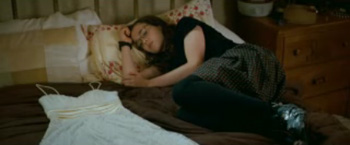 In Whip It, Bliss held a cynical attitude about her circumstances and how it contrasted her need for freedom to live her own life rather than her mothers. This attitude was demonstrated visually through scenes of depression, sulking, and passive-aggressive anger. Her very withdrawal from her mother helped visualize Bliss’s internal issues. Even her mother demonstrated through a quick cigarette that attempting to manipulate her daughter toward a “better life” was impossible and draining. She needed her fix to get through it. By the end, Bliss overcame her internal battle and the one with her mother, which drove her to a joyful climax. By the end of the film, Bliss was even strong enough to speak peer to peer with her antagonist and give her grief in a loving camaraderie way. |
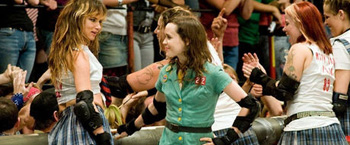 Positive emotions can also be used, but it is important to make sure there is enough contrast between the hero’s world in act 1 and the new act 3 world after the hero achieves her emotional breakthrough. The contrast is important for the audience to understand the growth and development of the character. The stronger the audience’s understanding, the more powerful the ah-hah moment that leads to the film’s climax. Character’s
Actions 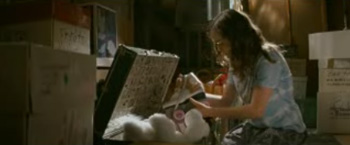 In Whip It, Bliss is a passive girl in act 1 who sees the Derby flyer, becomes proactive as she pulls out her old Barbie skates and begins practicing during every free moment she has. The writer explores all kinds of angles on how Bliss continues to make decision after decision in order to fulfill her need for freedom and her newfound skill of skating, which fills her life with joy. Screenwriters can create numerous actions for their hero by having the character investigate possibilities, uncover new opportunities or skills, outwit the antagonist or supporting character, transform others and themselves, manipulate circumstances or people, right the wrong doings, etc. Tying the action directly into the story keeps it plausible and avoids becoming a gratuitous action scene. 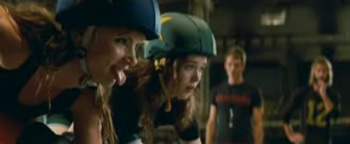 When the hero’s action comes into conflict with the antagonist, she finds herself having to push back by making a decision that drives another part of the story into full action. If there is no physicality between her and the antagonist, the hero must find something deep within her own emotions to drive the next action. Putting It All Together According to psychologists, we think something, which causes us to feel something, which in turn causes us to take action. The same will be true of the hero. The character’s philosophy will create attitudes about her world. These attitudes will drive her to make decisions to take specific actions. These actions are visually revealed in the form of emotions that drive activities that help the audience understand them. The activities also drive the action plotline and help develop the direction of the story. The repetition of these visual elements within various scenes builds a predisposition of the character to the point where the audience feels they know the hero and can directly relate to her—developing a bond that will last through the duration of the film. The audience will stick around to the bitter end of a story to understand what transformation the hero takes.  When a character is predisposed to certain actions or to avoid doing certain things, the audience’s confidence in the hero is strengthened. This confidence allows the writer to take the audience on a journey of transformation that could lead them to choose similar decisions in their own lives. For the viewers to change their thinking after watching a film, the hero must go through a positive transformation in front of them. But in order for the hero to truly experience change, she needs help from supporting characters, influences within the story arc, and an internal desire to get to another level in life. This transformation takes the entire movie to be fulfilled and only occurs during the times when the hero confronts the conflicts of each situation as her goals collide. All Rights Reserved. All photos and Whip It content TM and © 2009 Fox and its related entities. All Rights Reserved. CJ Powers can be reached for script consultation and translation work at cjpowers7[at]gmail [dot] com. |







